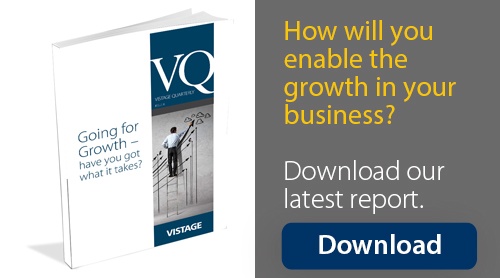
Changes in all markets can come on rapidly and may sometimes feel like a lot to take on, raining down attacks on your business. It’s often the case that great businesses get left behind because they won’t adapt – it’s not that they can’t, it’s that they won’t and don’t.
A change in the business model can take many forms of course; what you charge for, how you charge, how you go to market, how you reinvent your supply chain, how you organise assets and how you configure new value.
Technological and economical advances help to drive new business models. The question is, how is your company doing when it comes to embracing the changes?
Did you know that in addition to our peer to peer advisory group we run exclusive high impact leadership events for our members and selected guests that enables them to improve their businesses. One of our latest events with Jaynie Smith focused on improving value propositions – you’ll be surprised at the number of companies that find this difficult.
Recently, though, we have started to ask: “How would you disrupt your market?” Based on the promise that most business models are evolving and that change in the business model can be just as powerful as focusing a new customer value proposition, here’s how it works:
Ask your company these questions
- If we started again in this business what would we do?
- If we decided to compete with ourselves, how could we create disruption?
- If we focused our skills and resources on something else what would it be?
- How transferrable are our skills?
- How could we serve customers differently?
It’s once you start to try and light a fire and create a path for the management team to rethink things that change starts to become possible.
It might be that your answers and your thinking are:
- Can we change what we charge customers for?
- Could we make a change to our terms and conditions?
- Should we change our distribution channels?
- We could re-invent customer service!
- Could we reinvent ways for customers to do business with us?
- We can also do things differently in the way we organise the supply chain or the back office of the company.
- Can we license our technology?
- Can we benefit from outsourcing?
- Does it make sense to form joint ventures?
- What new materials and technologies could disrupt our products and businesses?
Be agile
Agile thinking, deconstructing, reorganising, reframing and reinventing are the strategic weapons of growth. It’s not the 1960s or the 1980s. It’s 2015. Companies no longer boast they have been in business 35 years, they boast they’ve been in business 3 years, growing at 200% per year – and we all want a piece of that action.
By doing business differently you can enable growth
Your value proposition defines why customers should do business with you and your business model defines how you do business.
Gary Hamel, in his book ‘Leading the Revolution’ suggested sending an email to all employees saying: “The washed-salad market is worth $1.4Bn. If they can do this with vegetables, what the hell is our excuse!”
You see, refining or redrawing your business model for growth isn’t about waiting for change, it’s about leading, rethinking and reframing the landsacpe. Working cultures and operating practice are changing. Communication is tearing down borders internationally and within markets.
Changing your unit of business
Does what you charge customers for reflect and align with the value created for your customers? Sometimes they are misaligned which can cause perceptual conflict with the customer and the value proposition and can drive customers to seek alternatives.
For example. Say you run a golf club and have been buying golf carts outright as a capital expenditure for the last 5 years. But you know that you only make money when the cart is hired out. So when two sales people turn up from competing golf cart companies and the first offers you lease purchase, you get interested. However, when the second sales person turns up and says: ‘Our business model is that you only pay for the hours of use of the carts and so typically golf course owners achieve a 30% margin on every hire.’ Now you’re not thinking about spending and investing, you’re thinking about how many hours you can hire out because every hour makes you money.
That’s a change in the business model.


